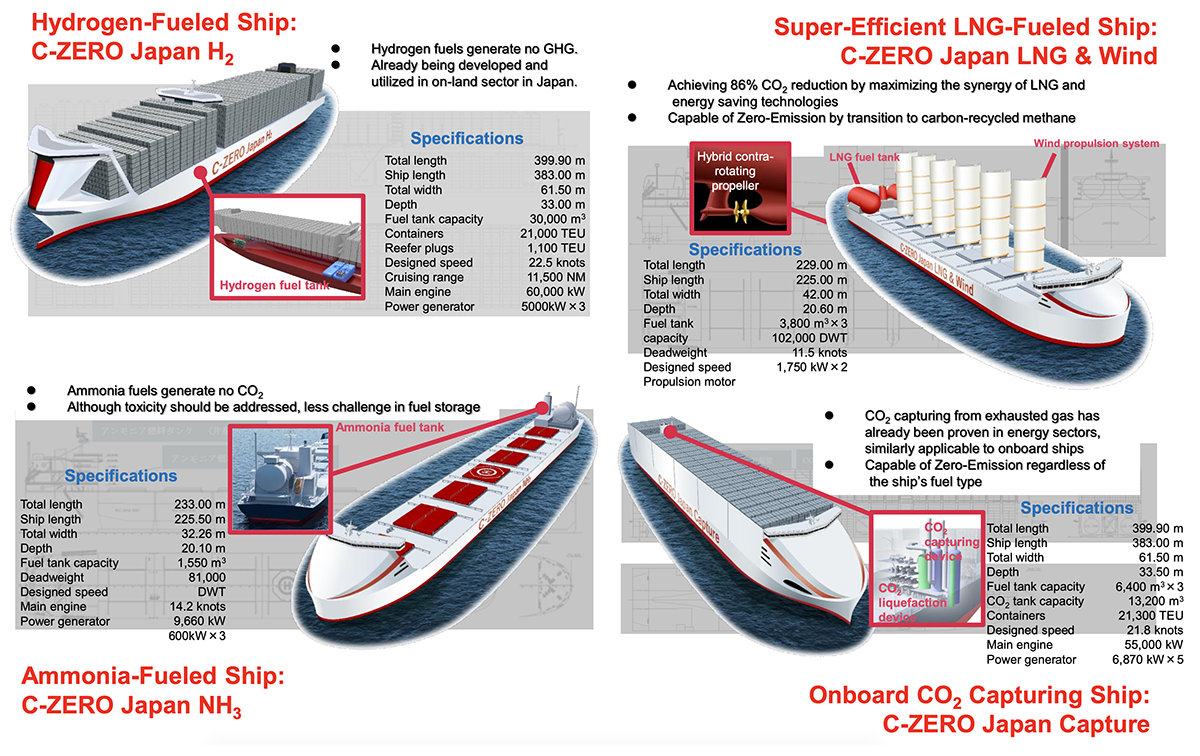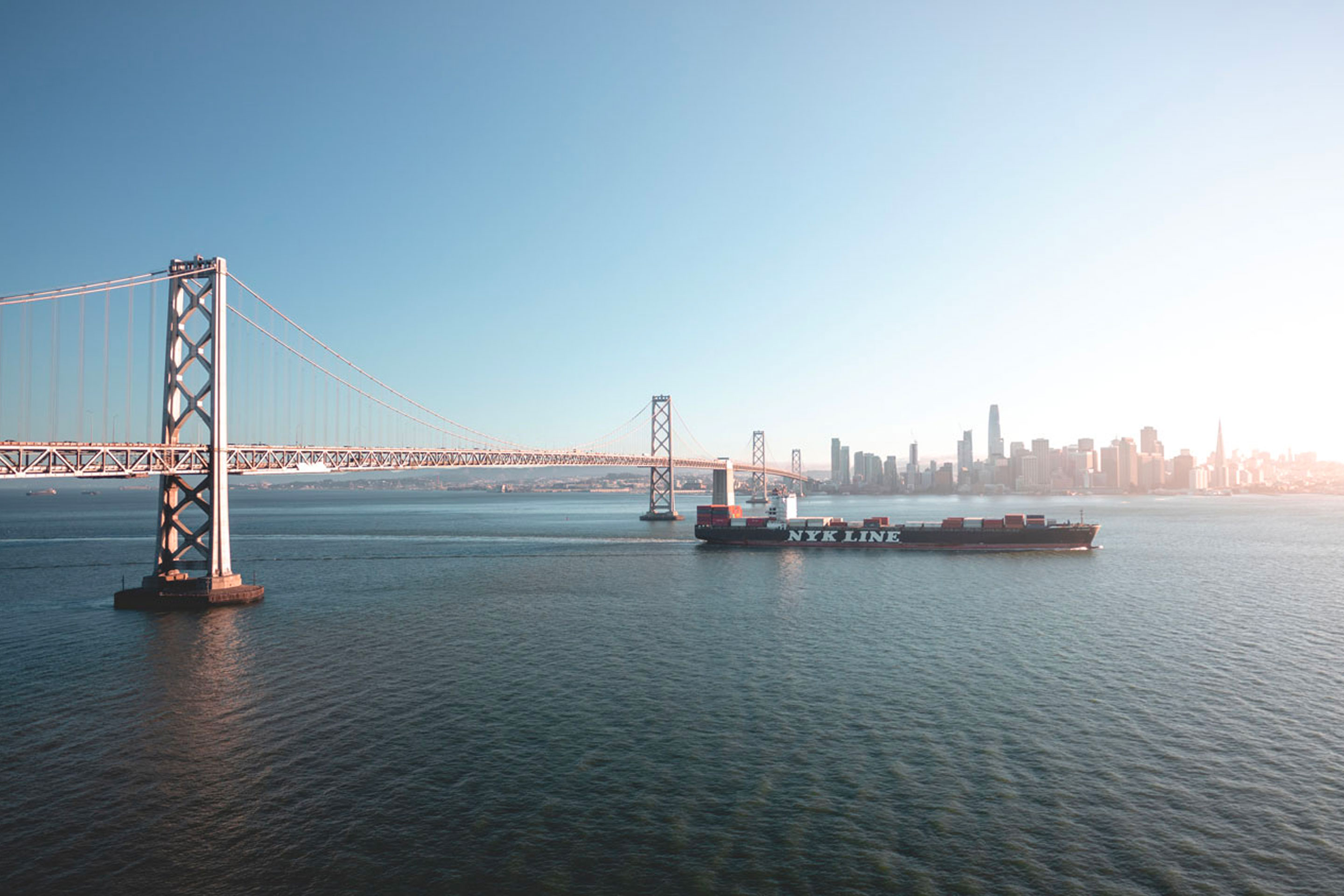With IMO 2030 and IMO 2050 targets on the horizon, the maritime industry faces some huge changes over the coming years and decades. ABB Turbocharging hosted a webinar on ‘The pathway to hydrogen and ammonia as shipping fuels’ last month, and it provided the ideal platform for Professor Koji Takasaki of Kyushu University to discuss Japan’s ‘Roadmap to Zero Emission from International Shipping’.
The roadmap is part of a collaboration between Japan’s Ministry of Land, Infrastructure, Transport and Tourism (MLIT), and maritime industries, research institutes, and public organizations, developed to meet growing momentum for decarbonization and to phase out greenhouse gas emissions as quickly as possible. It’s also part of a vision designed to meet the IMO’s targets of a 40% reduction in CO2 per transport work by 2030, and 70% by 2050, along with cutting total GHG emissions by at least 50% in 2050, compared to 2008 levels.
Such targets are not easily achieved and require radical thinking, and as part of his presentation Professor Takasaki, a specialist in marine engines and marine fuels, unveiled two feasible emission reduction pathways for the Roadmap to Zero Emission: LNG, using carbon-recycled methane, and the adoption of hydrogen or ammonia as marine fuels.
According to Professor Takasaki, Japan is embracing the global EEXI (Energy Efficiency Existing Ship Index) framework to meet IMO 2030 targets, with EEXI aimed at improving the energy efficiency of existing ships. The Roadmap to Zero Emission is a lot more ambitious when it comes to IMO 2050, however, with four concept designs for Zero Emission Ships in the pipeline, and Professor Takasaki highlighting 2028 as the year we’ll see the first zero emission ship entering service.
Professor Takasaki explains, “LNG to carbon-recycled methane is easy to shift to from fossil energy-fueled ships, because the properties are the same.” By 2050, carbon-recycled methane could make up 40% of energy consumption, with hydrogen and ammonia also capable of making up 44%, a target that according to Professor Takasaki could be achieved.

A look at Japan’s Zero Emission Ships
The concept ships take four different approaches to zero emissions, with the first two vessels embracing hydrogen and ammonia as fuel sources, the third using LNG and wind as propulsion systems, and a fourth that captures CO2 from exhaust gases to create a zero emission vessel irrespective of fuel source.
● Hydrogen-fueled ship: C-ZERO Japan H2
● Ammonia-fueled ship: C-ZERO Japan NH3
● Super-Efficient LNG-fueled ship: C-ZERO Japan LNG & Wind
● Onboard CO2 Capturing Ship: C-ZERO Japan Capture
There are benefits to each of the different routes, with Professor Takasaki highlighting zero greenhouse gasses from the use of hydrogen fuels with the C-ZERO Japan H2, and the technology is already being developed and utilized on-land in Japan. Using ammonia as a fuel in the C-ZERO Japan NH3 offers the benefit of zero CO2, and although toxicity is an issue to be addressed, it also offers fewer challenges than hydrogen when it comes to fuel storage.
According to Professor Takasaki, the C-ZERO Japan LNG & Wind will be capable of achieving an 86% reduction in CO2 through the use of LGN and energy-saving technologies, while a transition to carbon-recycled methane will produce a vessel capable of zero emissions. The fourth and final concept, the C-ZERO Japan Capture, will use technology already proven in energy sectors, capturing CO2 directly from exhaust gasses.
Whatever route Japan embraces, it’s clear that hydrogen has a big part to play, and Torsten Mundt, Principle Research Engineer at the DNV GL and technical adviser on the reduction of green-house gas and air emissions, highlighted hydrogen as a key component in the journey to fewer emissions, whether as a fuel in itself or used in the creation of methane or ammonia. It’s a vision also shared by our own Dr. Dino Imhof, another panellist at the webinar, who has previously discussed the path to hydrogen with a zero-carbon footprint.
So how do we get there? “Research and development, including tank, storage and of course engines must be carried out,” says Professor Takasaki. “The pilot project experiment and demonstration of the use of the new fuels must be started, and we expect 2028 for the first zero emission ship to be applied. This will be scaled up for 2050.”
If Japan can make its concepts a reality by 2028, the maritime industry may be on the way to meeting the stringent targets laid out for IMO 2050.
Get free access to the full webinar here.














